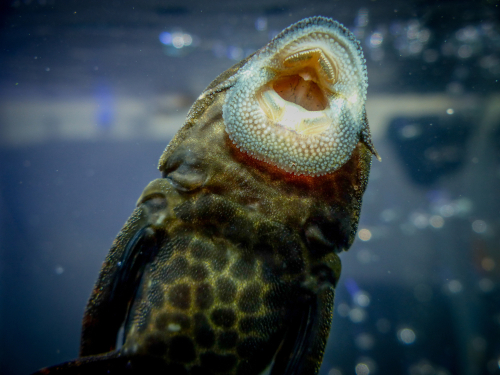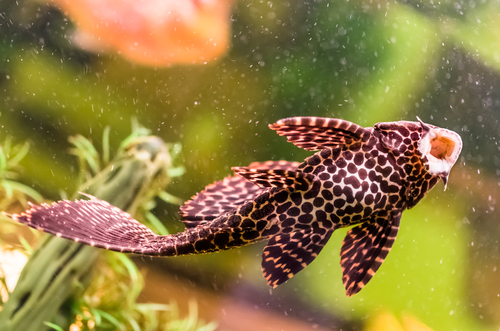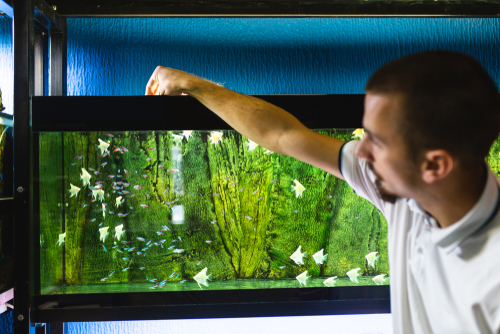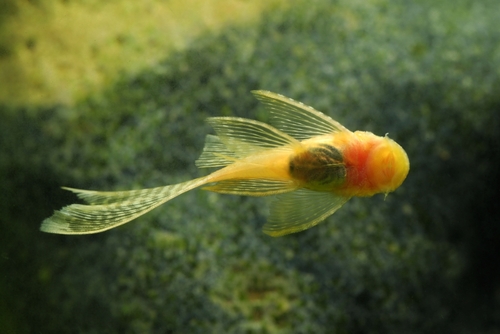Plecostomus, commonly known as Plecos, are a popular freshwater fish species that are widely kept in aquariums. These fish are known for their unique appearance and their ability to clean algae from aquariums.
However, one of the most important aspects of keeping Plecos healthy is their diet. In this article, we will explore what do Plecostomus eat and how to ensure that they are getting the proper nutrients.
Understanding Plecostomus and their dietary needs is essential to keeping them healthy. Plecos are omnivorous, meaning they eat both plant and animal matter. In the wild, they feed on algae, plant matter, and small invertebrates.
In captivity, it is important to provide them with a balanced diet that includes both plant and animal-based foods. Without proper nutrition, Plecos can develop health problems such as malnutrition, obesity, and digestive issues.
Feeding Plecostomus in an aquarium can be challenging, but it is important to ensure they are getting the right nutrients. In the next section, we will discuss the different types of food that Plecos can eat and how to create a balanced diet for them.
By understanding their dietary needs and providing them with the right foods, you can ensure that your Plecos stay healthy and happy.
Contents
Key Takeaways on What Do Plecostomus Eat
- Plecostomus are omnivorous, meaning they eat both plant and animal matter.
- A balanced diet that includes both plant and animal-based foods is essential for keeping Plecos healthy.
- Providing the right foods and understanding their dietary needs is crucial for feeding Plecostomus in an aquarium.
Check out these other popular posts in this category:
- What Do Otocinclus Eat?
- What Do Bottom Feeders Eat?
- Diatoms in Aquariums: What Do They Eat & Best Management Tips
Understanding Plecostomus

Plecostomus, also known as pleco, is a species of catfish that belongs to the family Loricariidae. They are commonly kept as aquarium pets due to their unique appearance and ability to clean algae from tanks.
There are several different types of plecos, including the common pleco, bristlenose pleco, royal pleco, and zebra pleco.
Plecos are known for their distinctive suckermouths, which they use to attach to surfaces and scrape algae off of them. However, they are not just herbivores – they are also omnivores and will eat a variety of foods in the wild.
In captivity, it is important to provide a balanced diet for plecos to ensure their health and wellbeing.
Some common foods that plecos will eat include:
- Algae wafers: These are specially formulated pellets that contain algae and other nutrients that plecos need.

- Vegetables: Plecos enjoy vegetables such as zucchini, cucumber, and spinach. These can be blanched or boiled before being added to the tank.
- Meaty foods: Plecos will also eat meaty foods such as shrimp, krill, and bloodworms. These should be fed sparingly, as they are high in protein and can cause digestive issues if overconsumed.
- Insects: Plecos are omnivores, which means they eat both plants and animals. In the wild, they eat a variety of insects, such as crickets and mealworms.
Insects are a good source of protein for plecos, so it’s advisable that you to offer them occasionally to your plecos as part of a balanced diet. However, it’s important to avoid feeding plecos wild insects, because these may carry parasites or diseases.
If you do choose to feed your pleco insects, it’s recommended that you purchase them from a reputable source and quarantine them for a few weeks before feeding them.
This will help to reduce the risk of introducing parasites or diseases into your aquarium. - Fruits: Plecos can consume certain fruits like melon, papaya, and apple in small quantities. However, It’s best you offer them fruits as an occasional treat and not a primary part of their diet.
You can offer your pleco either cooked or raw fruit, but it’s important to remove any uneaten pieces after 24 hours to prevent water quality problems.
Here is a sample feeding schedule for Plecos:
- Morning: Feed your plecos a small amount of algae wafers or other commercial pleco food.
- Afternoon: Offer your plecos a piece of fresh or blanched vegetable.
- Evening: Feed your plecos a small amount of frozen food or live invertebrates. If you follow these tips, you can ensure that your plecostomus diet is balanced and your plecos are getting the nutrition they need to live a long and healthy life.
It is important to note that different types of plecos may have different dietary needs. For example, some plecos may require more protein in their diet than others.
It is important to research the specific type of pleco you have and tailor their diet accordingly.
In addition to providing a balanced diet, it is also important to ensure that plecos have a clean and healthy environment to live in. This includes regular water changes, proper filtration, and adequate hiding spaces.
Some common foods that Plecos will not eat include:
- Acidic foods: Plecos are sensitive to acidic foods, such as oranges, lemons, and tomatoes. These foods can irritate their digestive system and cause health problems, such as inflammation and ulcers.
- Fatty foods: Fatty foods, such as meat scraps and butter, can also harm plecos. Fatty foods can lead to obesity and other health problems, such as liver disease and heart disease.
- Starchy foods: Starchy foods, such as bread and pasta, are not easily digestible by plecos and can cause bloating and constipation. The foods can also lead to malnutrition because they’ll not be able to absorb the nutrients they need from other foods if they are full of starch.
- Processed foods: Take caution to not feed your plecos with processed foods like fish food flakes and pellets that contain artificial ingredients. These foods can be low in nutritional value and can contain harmful chemicals like preservatives and artificial colors.
Please note that even if a food is not explicitly listed as something that plecos should not eat, it’s always best to be cautious when feeding them.
Natural Habitat of Plecostomus
Plecostomus, also known as plecos, are freshwater fish that are native to South America. They are commonly found in streams and rivers, where they feed on algae and other plant matter.
Their natural habitat is typically in areas with slow-moving water and plenty of vegetation.These fish are known for their ability to survive in a variety of habitats, including murky waters and areas with low oxygen levels.
They have adapted to their environment by developing a specialized digestive system that allows them to extract nutrients from tough plant matter.
In the wild, plecos are often found hiding in crevices and under rocks during the day, and they become more active at night when they come out to feed. They are also known to migrate upstream during the breeding season.
Plecostomus Behavior and Characteristics

Plecostomus, also known as plecos, are a type of freshwater fish that are popular among aquarium enthusiasts. They are known for their unique appearance and their ability to help keep tanks clean.
In this section, we will discuss the behavior and characteristics of plecos.
Nocturnal Behavior
Plecos are nocturnal creatures, which means they are most active at night. During the day, they tend to hide in caves or under rocks. This behavior is important to keep in mind when feeding plecos. It is best to feed them at night when they are most active.
Omnivorous Diet
Plecos are omnivores, which means they eat both plants and animals. In the wild, they feed on algae, insects, and small crustaceans. In captivity, they can be fed a variety of foods, including algae wafers, vegetables, and meaty foods like shrimp or bloodworms.
Peaceful and Non-Aggressive
Plecos are generally peaceful and non-aggressive fish. They can be kept with other peaceful fish that are similar in size. However, it is important to note that plecos can become territorial if they feel threatened or if there is not enough space in the tank.
Ability to Breathe Air
Plecos have the ability to breathe air, which means they can survive in tanks with low oxygen levels. This is because they have a modified digestive system that allows them to extract oxygen from the air.
However, it is still important to maintain proper oxygen levels in the tank to ensure the health of all fish.
Dietary Needs of Plecostomus

Plecostomus are herbivorous fish that require a balanced diet to maintain their health. They are known for their ability to eat algae, driftwood, and other plant-based materials. However, they also require protein-rich foods to supplement their diet.
Some of the foods that plecostomus can eat include algae wafers, shrimp pellets, vegetables such as zucchini and cucumber, and live plants. They can also eat meat-based foods such as bloodworms and small crustaceans.
Plecostomus require a high-fiber diet to aid in digestion and prevent constipation. Foods such as squash, carrots, and spinach are excellent sources of fiber.
Wood is an important part of the pleco diet, especially for wood-eating plecos. The wood fiber helps to keep their digestive system healthy and functioning properly. Driftwood is a great source of wood fiber, and it also provides a natural habitat for plecos.
Feeding Plecostomus in an Aquarium
Plecostomus are a type of algae eater commonly kept in aquariums. They are known for their ability to keep the aquarium clean by eating algae and other debris.
However, it is important to feed them a balanced diet to ensure their overall health.
When feeding Plecostomus, it is important to consider their natural feeding habits. They are bottom feeders and prefer sinking foods. It is recommended to feed them at night when they are most active.
There are various types of food that can be given to Plecostomus. Algae wafers, sinking pellets, and vegetables such as zucchini and cucumber are all good options. It is important to avoid overfeeding as this can lead to health problems.
In addition to their regular diet, Plecostomus can also be given treats such as earthworms and frozen brine shrimp. These should be given sparingly and only as a supplement to their regular diet.
It is also important to provide hiding places for Plecostomus as they can be shy and territorial. Rocks and other decorations can provide them with a place to hide and feel secure.
Proper filtration and circulation in the aquarium is also important for the health of Plecostomus. A water filter should be used to keep the water clean and clear. The temperature of the water should be kept between 72-82°F.
Some recommended food options for Plecostomus are Omega One Veggie Rounds and Repashy Community Plus. These foods are specially formulated for herbivorous fish and provide a balanced diet.
Caring for Plecostomus

Caring for plecostomus is relatively easy, but it does require some attention to detail. Plecos are hardy fish that can live for many years, with some specimens living up to 20 years or more. Here are some tips for keeping your plecos healthy and happy:
Tank Size:
Plecos can grow quite large, so it’s important to provide them with a tank that is large enough to accommodate their size. A good rule of thumb is to provide at least 30 gallons of water for each pleco you plan to keep.
Water Parameters:
Plecos prefer a pH range of 6.5 to 7.5, and a temperature range of 72 to 82 degrees Fahrenheit. They are also sensitive to high levels of ammonia and nitrites, so it’s important to keep the water clean and well-filtered.
Diet:
Plecos are primarily herbivores and will eat algae, vegetables, and sinking pellets. It’s important to provide them with a varied diet to ensure they get all the nutrients they need. Avoid overfeeding, as plecos can become obese and develop health problems.
Tank Mates:
Plecos are generally peaceful fish, but they can become aggressive towards smaller fish. It’s important to avoid keeping plecos with small or delicate fish, as they may view them as prey.
They can be kept with larger, more robust fish such as cichlids and goldfish, as long as the tank is large enough to accommodate all the fish.
Compatibility:
Plecos can be kept with a variety of species of fish, but it’s important to research the specific needs of each species before introducing them to the tank.
Some fish may require different water parameters or may be aggressive towards plecos.
Age:
Plecos can live for many years, so it’s important to consider their lifespan when deciding whether to keep them as pets. They can also be quite active and require lots of space to swim and explore.
Experience Level:

Plecos are generally easy to care for, but they do require some knowledge and attention to detail. They may not be suitable for beginner fishkeepers, but can be a great addition to the aquarium of an experienced hobbyist.
Fry:
Plecos can be bred in captivity, but it’s important to provide them with a separate breeding tank to ensure the safety of the fry. The fry will require special care and attention, including a specific diet and water parameters.
Ich:
Like all fish, plecos are susceptible to ich, a common parasite that can cause health problems. It’s important to monitor your plecos for signs of ich, including white spots on the body and fins, and to treat them promptly if necessary.
Frequently Asked Questions
What are some vegetables that plecos can eat?
Plecos are herbivores and they love to eat vegetables. Some vegetables that plecos can eat include zucchini, cucumber, spinach, lettuce, and peas.
It is important to blanch the vegetables before feeding them to plecos as this makes them easier to digest.
What is the best food for plecos?
The best food for plecos is a combination of vegetables and algae wafers. They also love to eat driftwood and other plant matter. It is important to provide a varied diet for plecos to ensure they get all the nutrients they need.
Do plecos eat fish flakes?

Plecos can eat fish flakes, but they are not their preferred food. It is important to provide a balanced diet for plecos that includes vegetables and algae wafers.
Will a plecostomus eat other fish?
Plecos are not aggressive and do not usually eat other fish. However, they may eat dead fish or fish that are sick or injured.
How long can plecos live?
Plecos can live for up to 20 years in captivity if they are given proper care and a balanced diet.
How can I get my pleco to come out?
Plecos are nocturnal and prefer to hide during the day. To get your pleco to come out, you can try turning off the lights in the tank or providing hiding places such as caves or plants. You can also try feeding your pleco at night when they are more active.

Veteran fish keeper and keen hobbyist with a serious case of MTS. My midlife crisis was the establishment of a fish room, much to my wife’s horror. Little does she know it could be worse!!


